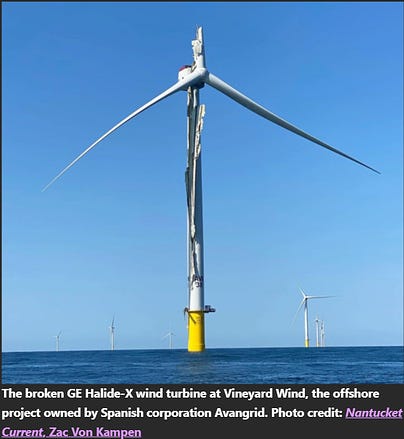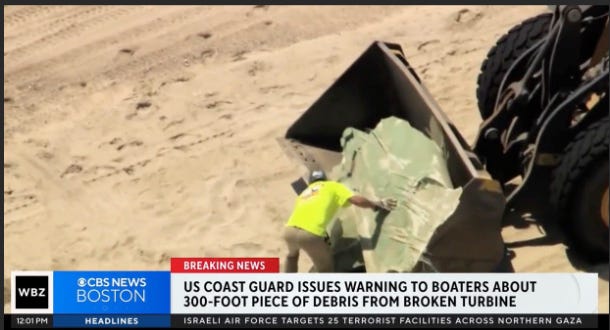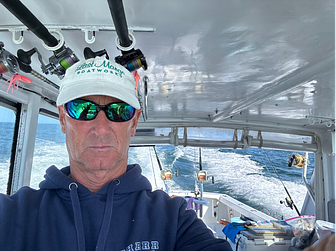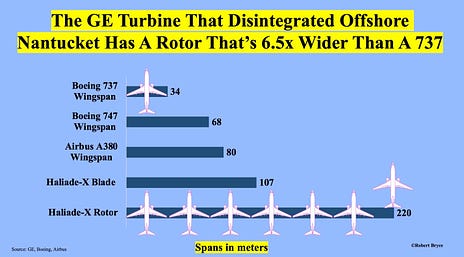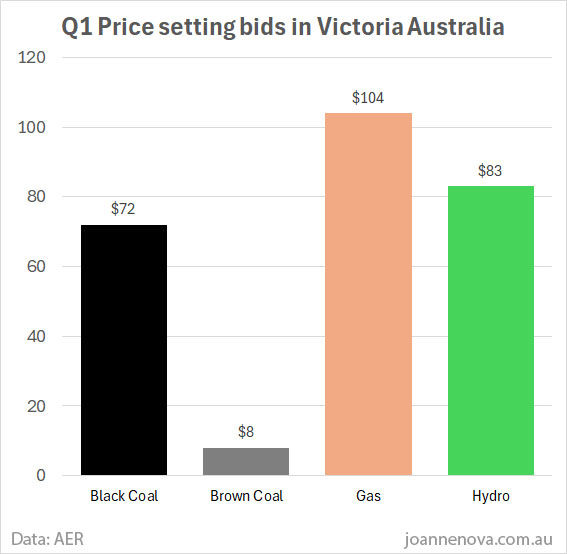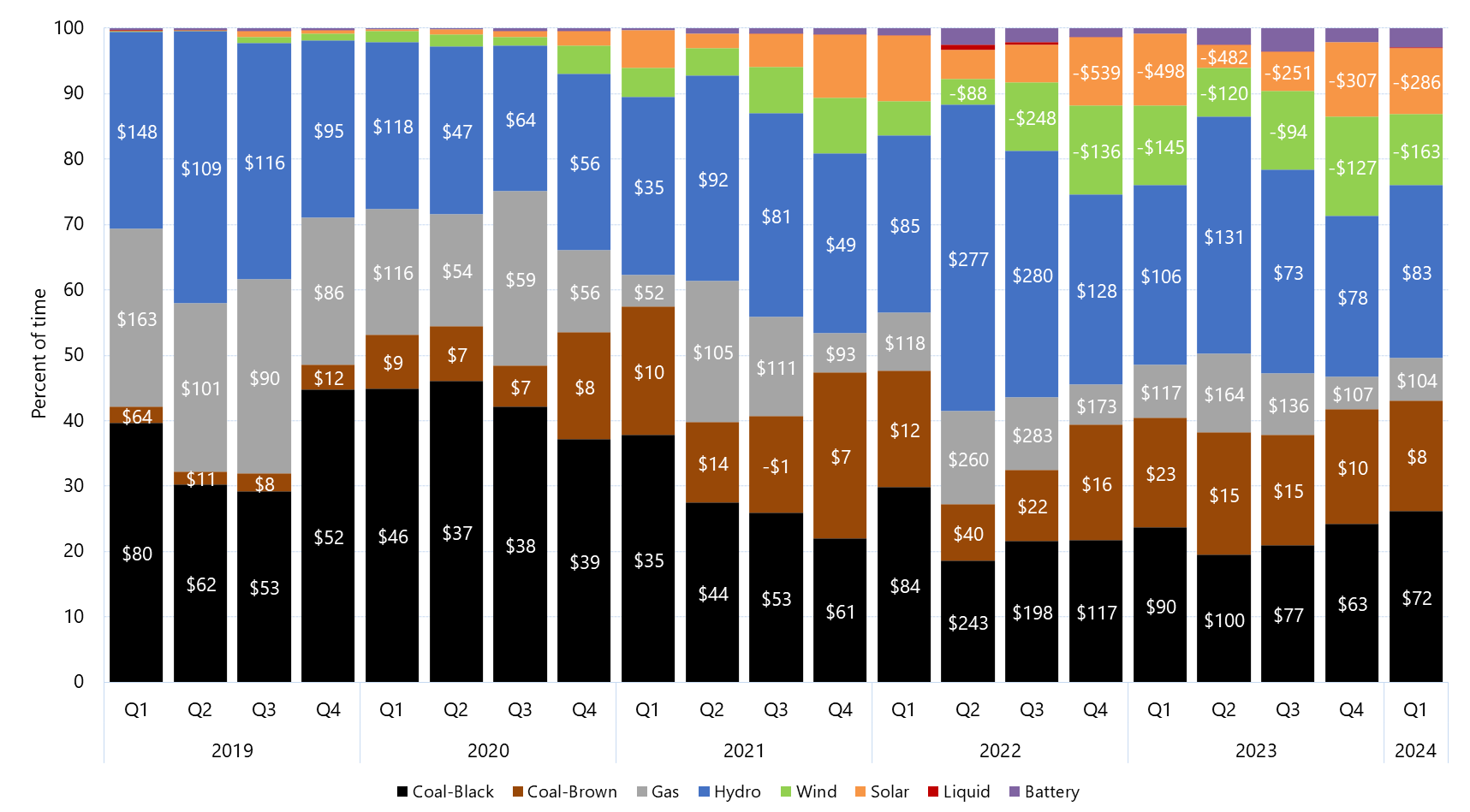The only thing green about Big Wind is the money going to the 'renewable' energy companies
The disintegration of the turbine blade and resultantpollution that forced the closure of Nantucket’s beaches should scuttle theoffshore wind scam. But it’s only the tip of Big Wind’s problems.
͏͏͏͏͏͏͏͏͏͏͏͏͏͏͏͏͏͏͏͏͏͏͏͏͏͏͏͏͏͏͏͏͏͏͏͏͏͏͏͏͏͏͏͏͏͏͏͏͏͏͏͏͏͏͏͏͏͏͏͏͏͏͏͏͏͏͏͏͏͏͏͏͏͏͏͏͏͏͏͏͏͏͏͏͏͏͏͏͏͏͏͏͏͏͏͏͏͏͏͏͏͏͏͏͏͏͏͏͏͏͏͏͏͏͏͏͏͏͏͏͏͏͏͏͏͏͏͏͏͏͏͏͏͏͏͏͏͏͏͏͏͏͏͏͏͏͏͏͏͏͏͏͏͏͏͏͏͏͏͏͏͏͏͏͏͏͏͏͏͏͏͏͏͏͏͏͏͏͏͏͏͏͏͏͏͏͏͏͏͏͏͏͏͏͏͏͏͏͏͏
Forwarded this email? Subscribe here for more
Latest Substack from Michael Darby with Special Thanks to Paid Subscribers
Slam the scam: Robert Bryce torpedoes Nantucket offshore gigantism.
The disintegration of the turbine blade and resultant pollution that forced the closure of Nantucket’s beaches should scuttle the offshore wind scam. But it’s only the tip of Big Wind’s problems.
Jul 23
Sincere thanks to many readers who helpfully forward to friends the Michael Darby in Australia substack. Instead of forwarding, please SHARE THIS LINK TO THIS SUBSTACK. The link saves on data transmission and allows the recipients to see corrections and updates. Please also recommend to friends and post the link to social media. THIS IS THE LINK TO SUBSCRIBE TO ROBERT BRYCE.
Breaking Wind by Robert Bryce
14 July 2024
On Saturday, the Nantucket Select Board announced it was considering legal action against Avangrid and Copenhagen Infrastructure Partners, the foreign corporations that own the $4 billion Vineyard Wind project now under construction in Massachusetts waters. The Select Board will meet today, Monday, in executive session to discuss the litigation.
The news of the possible litigation, which the Nantucket Current published on Saturday, comes less than a week after tons of debris from the broken wind turbine blade that was part of the massive offshore project began washing ashore on the island. The pollution forced the town to temporarily close many of its beaches during the peak summer tourist season while the debris was removed. The beaches have since reopened.
As I noted here a week ago, the development of offshore wind energy on the Eastern Seaboard has been promoted by some of America’s biggest climate NGOs, including the Sierra Club, Natural Resources Defense Council, National Wildlife Federation, and Conservation Law Foundation, as well as numerous Democratic politicians at state and federal levels. But the disaster at Vineyard Wind — and it is a monumental disaster for the offshore wind industry — is spotlighting the environmental risks posed by installing dozens or even hundreds of massive wind turbines and offshore platforms in our oceans. This disaster happened in calm weather. It doesn’t take much effort to imagine what will happen when a hurricane hits the East Coast.
The NGOs have been shameless in their collusion with foreign corporations, including oil companies like Equinor and Total, that are eagerly queueing up to collect billions in federal tax credits. But the turbine blade failure at Vineyard Wind is only part of a broader crisis facing Big Wind, both onshore and offshore. Before I talk about that crisis, and hurricanes, a bit of background is needed.
The Vineyard Wind project aims to have 800 megawatts of capacity. It will require installing 62 offshore platforms on the Eastern Seaboard in the midst of known North Atlantic Right Whale Habitat. Each turbine will have a capacity of about 13 megawatts. A handful of turbines have been installed and the project began producing power in January.
Public sentiment about “clean” energy on display in Nantucket. The Nantucket Current posted this photo on Twitter on Friday.
On Saturday, I talked to Amy DiSibio, a board member of ACK 4 Whales, the Nantucket group fighting offshore wind. “People are pissed,” she said. “They are really upset for a lot of reasons.” (ACK 4 Whales has sued to stop the project, arguing that the federal government ignored the Endangered Species Act when it issued the permit. A federal judge rejected their case in April, but the group is appealing their case to the U.S. Supreme Court.)
One of the reasons for the anger is obvious: the turbine blade began disintegrating on Saturday evening and sent some 17 cubic yards of debris into the ocean. But the owners of Vineyard Wind didn’t notify officials in Nantucket until Monday at about 5 pm. On Tuesday, the Bureau of Safety and Environmental Enforcement, which is part of the Interior Department, issued a stop work order at Vineyard Wind, “until further notice.”
On Thursday, as the beach cleanup was ongoing, the remaining portion of the massive turbine blade, a chunk about 300 feet long, fell into the Atlantic Ocean. The Coast Guard warned mariners in the area of the wind project, which is located 15 miles south of Nantucket and Martha's Vineyard, to “use extreme caution” when passing through the region.
On Sunday afternoon, Nantucket fisherman and former Select Board member Bob DeCosta sent me this selfie from his boat, The Albacore. “Big Wind is not green. The only thing green about it is the money going to the offshore wind companies.”
On Sunday afternoon, I talked to Bob DeCosta, a fisherman on Nantucket who started fishing with his father when he was nine. “I’ve been on the water for 56 years,” he told me from his boat. “I don’t have a Ph.D. But like the other fishermen here, I know the tides, and the waters better than anybody. They never talked to us. These wind turbines are getting steamrolled over us. Big Wind is not green. The only thing green about it is the money going to the offshore wind companies.”
DeCosta, who served on the Nantucket Select Board for six years, operates a 35-foot charter boat, The Albacore, with his son, Ray. DeCosta said he steered his vessel through the area near Vineyard Wind early last Sunday morning through thick fog but didn’t know that debris from the shattered turbine blade was in the water. DeCosta said he could have unwittingly hit the debris which would have done significant damage to his boat. “For 48 hours, that stuff was floating around, and we knew nothing about it. It’s unacceptable.”
In addition to the public relations disaster at Vineyard Wind, Big Wind is facing a crisis caused by simple physics. The turbines now being deployed onshore and offshore are failing far sooner than expected. Why? They have gotten too big. Yes, bigger wind turbines are more efficient than their smaller cousins. But the larger the turbine, the more its components get hit by the stresses that come with their size and weight. The GE Vernova Haliade-X wind turbine used at Vineyard Wind stands 260 meters high and sweeps an area of 38,000 square meters. That means the turbine captures wind energy over an area five times larger than a soccer pitch.
But here’s the critical part: its blades are 107 meters (351 feet) long and weigh 70 tons. In addition, the rotor of the massive machine spans 220 meters. For comparison, the wingspan of a Boeing 737 is 34 meters. In other words, the turbines at Vineyard Wind are nearly as tall as the Eiffel Tower and each of their blades weighs more than a fully loaded 737.
As shown in the graphic above, the Haliade-X rotor is six and a half times wider than the wingspan of a 737. Given the enormity of the machines, it’s no wonder they are failing.
How bad is the problem? On June 28, Ohio-based American Electric Power sued GE Vernova in New York court, claiming widespread issues with the turbines it has deployed at three wind projects in Oklahoma. The complaint says:
Within only two to three years of commercial operation, the GE wind turbine generators have exhibited numerous material defects on major components and experienced several complete failures, at least one turbine blade liberation event, and other deficiencies...[a]significant portion of the wind turbine generators have completely failed or have otherwise been rendered inoperable, requiring immediate repair
According to a July 2 article in Renews.Biz, AEP, a publicly traded utility with 5.6 million customers, says that it has already incurred:
“millions of dollars in costs and damages in the future” because it will “inevitably need to repair and/or replace” additional wind turbine generators in order to meet the energy production requirements of its customers. It went on to allege that GE Vernova has refused to acknowledge responsibility to repair and/or replace all defective wind turbine generators.AEP said that in addition to its claim for cash damages, it is seeking a declaratory judgment that GE Vernova is liable for expected future failures of its wind turbine generators.
Adding intrigue to the AEP lawsuit and the failure of the turbine blade at Vineyard Wind is that GE Vernova has not issued any press releases or filed any documents with the SEC to acknowledge its potential liabilities. The company will hold its second-quarter earnings call on Wednesday and it may disclose more dismal results from its wind business. In the first quarter, it reported a 40% decline in new wind turbine orders from a year ago. It also saw a 6% decline in revenue.
How much is at stake in the AEP vs. GE Vernova litigation? According to one report, the turbines in question have a capacity of 1.5 gigawatts and cost $6.4 billion. Thus, it’s easy to imagine that GE Vernova could be on the hook for hundreds of millions of dollars in losses. Furthermore, those losses may be only part of the company’s long-term liabilities.
GE Vernova isn’t the only wind turbine maker being mauled by physics. Last year, Germany’s Siemens Energy, announced it would take a $2.4 billion loss on its wind business due to quality problems with its wind turbines. And remember, these failures and losses are happening with onshore wind turbines. The looming operation and maintenance costs for offshore wind will be astronomical.
Among the most disgusting aspects of the offshore wind scam — including the fact that foreign companies are collecting billions of dollars in tax credits so they can industrialize our oceans and do harm to our fisheries, and the critically endangered North Atlantic Right Whale — is that the current disaster was easily foreseen. Just 16 months ago, during the CERAWeek energy conference in Houston, the CEO of NextEra Energy, John Ketchum, called offshore wind “a bad bet.”
NextEra has been hyper-aggressive in its push to site solar and wind projects in rural communities across the country and Canada. And while its business tactics are often odious, NextEra is the world’s largest producer of alt-energy, which means Ketchum knows the industry. Ketchum said of offshore wind, “We find it hard enough just to take care of a fleet onshore with some of the issues that we deal with as a company, and we're best in class.”
Reuters went on to quote him thusly:
Ketchum said some of the industry's complications included saltwater corrosion, the threat of hurricanes, the availability of ships, and the installation of subsea transmission cables, and added that supply chain issues have driven up the costs.
The crucial part of Ketchum’s statement, is, of course, “the threat of hurricanes.” If GE’s wind turbine blades are coming apart now, during a calm summer day, imagine the calamity when a large hurricane slams the Eastern Seaboard. The damage to turbines at Vineyard Wind and other offshore projects will be massive and the damage to beaches and fisheries will be enormous.
DeCosta is staggered by the size of the wind turbines and furious at how Nantucket’s residents and fishermen have been ignored. “There are other ways to produce energy without doing this to our oceans,” he said. “I know a thing or two about the saltwater environment. I can’t imagine what it will take to keep these things running in salt water.” When asked about the damage a hurricane would do to the turbines, he said, “We will be picking up the pieces from this on the beaches at Nantucket for the next 20 years.” He then asked a critical question that remains unanswered: “When this stuff is obsolete, who’s going to pay to remove it? They are talking about a total of 1,400 of these things.”
DeCosta told me the turbine blade failure at Vineyard Wind is, in a way, good for opponents like him. “My hope is that we make enough of a stink that they don’t put up any more of these things. We aren’t giving up.”
Well said, Robert Bryce!
The threat to Australia may be even greater
The profiteering subsidy-thieving wildlife-slaughtering coastline-desecrating criminal scum are similarly attacking Australia with offshore windfarms, cheered on by the ABC, SBS and the corrupt majority of management and presenters at mainstream media.
High on the list of the lies they tell is the fase claim that gargantuan offshore windmills are an inexpensive method of powering communities.
For truth about energy costs, the honest sources are found in sidestream media, where important leadership ia given by West Australia’s blogger, Jo Nova. On 20 July 2024 Joanne Nova wrote:
Brown coal is the best kept secret in Australia
Imagine, in this cost-of-living crisis, if the nation discovered a 430 billion ton deposit that could produce electricity at a tenth the cost of gas and hydroelectricity? What a bonanza — the people could live like kings with heated pools, large homes, indoor spas and businesses would flock to the state to set up production lines. The state would become a trade giant and a mecca for tech.
Then imagine they let themselves be spooked into not using it for fear it would cause bad storms in a hundred years? Like the country is run by teenage girls…
Despite the costs of everything rising in 2024, the brown coal plants in Victoria are still offering to supply wholesale electricity at $8 per megawatt hour (which is 0.8c per kilowatt hour). That’s the average winning bid from brown coal plants across Quarter 1, 2024.
In the chart below of the last five years of quarterly prices, we can see that every single quarter brown coal power is the cheapest source of electricity there is bar none. (Wind and solar power, with their crazy negative prices, don’t count because they’re subsidized up-the-kazoo. Their real cost is paid through other hidden means. It’s either that, or the negative prices tell us wind and solar power are so awful you have pay people to take those toxic electrons away…).
In the last quarter brown coal set the winning bid price about 15% of the time. These were the times when there was enough brown coal power in Victoria that the grid managers didn’t have to buy any black coal, gas or hydro power at all.
The more coal power Victoria has, the more often the wholesale price will be insanely low…
Because of the way the auction works, the highest successful bidder sets the price for everyone. In theory, generators are supposed to bid the lowest price they’d accept and then the AEMO takes the cheapest offers first until it meets the full demand.
And it’s the same all across the Eastern Coast of Australia — in New South Wales was getting bids from brown coal generators at $12 per megawatt hour. In South Australia, $11. In Queensland $13, and in Tasmania $7.
- Forums
- Political Debate
- Accelerate the World's Transition to Sustainable Energy - to fight Anthropogenic Climate Change
The only thing green about Big Wind is the money going to the...
-
- There are more pages in this discussion • 18 more messages in this thread...
You’re viewing a single post only. To view the entire thread just sign in or Join Now (FREE)
Featured News
Featured News
The Watchlist
I88
INFINI RESOURCES LIMITED
Charles Armstrong, CEO & MD
Charles Armstrong
CEO & MD
Previous Video
Next Video
SPONSORED BY The Market Online
